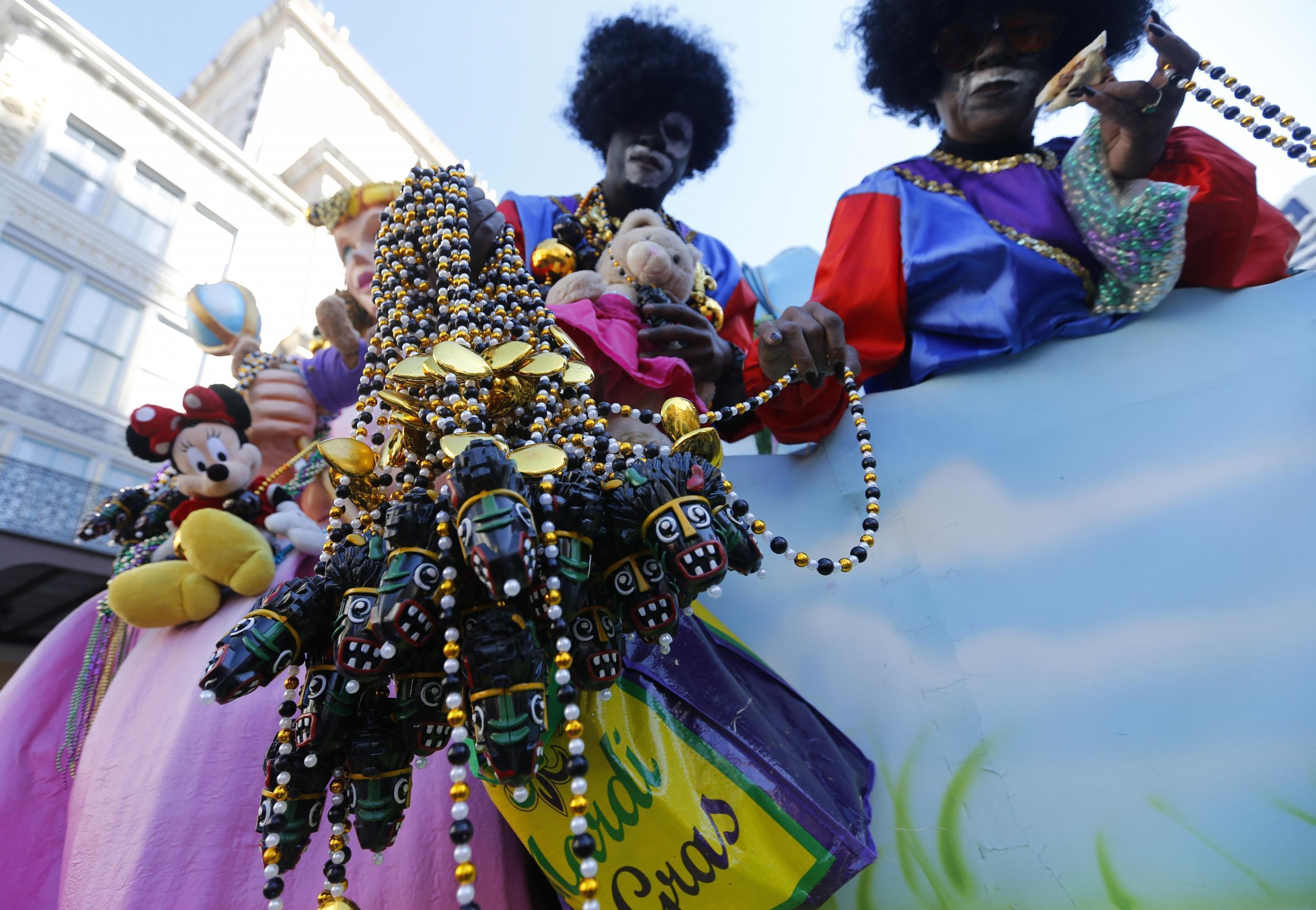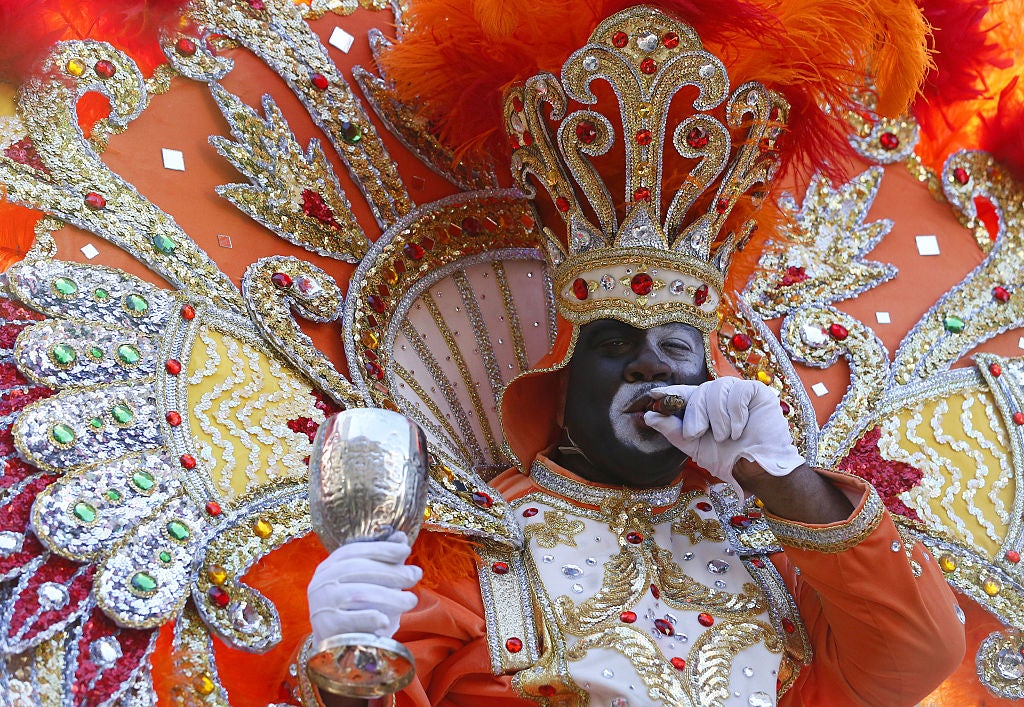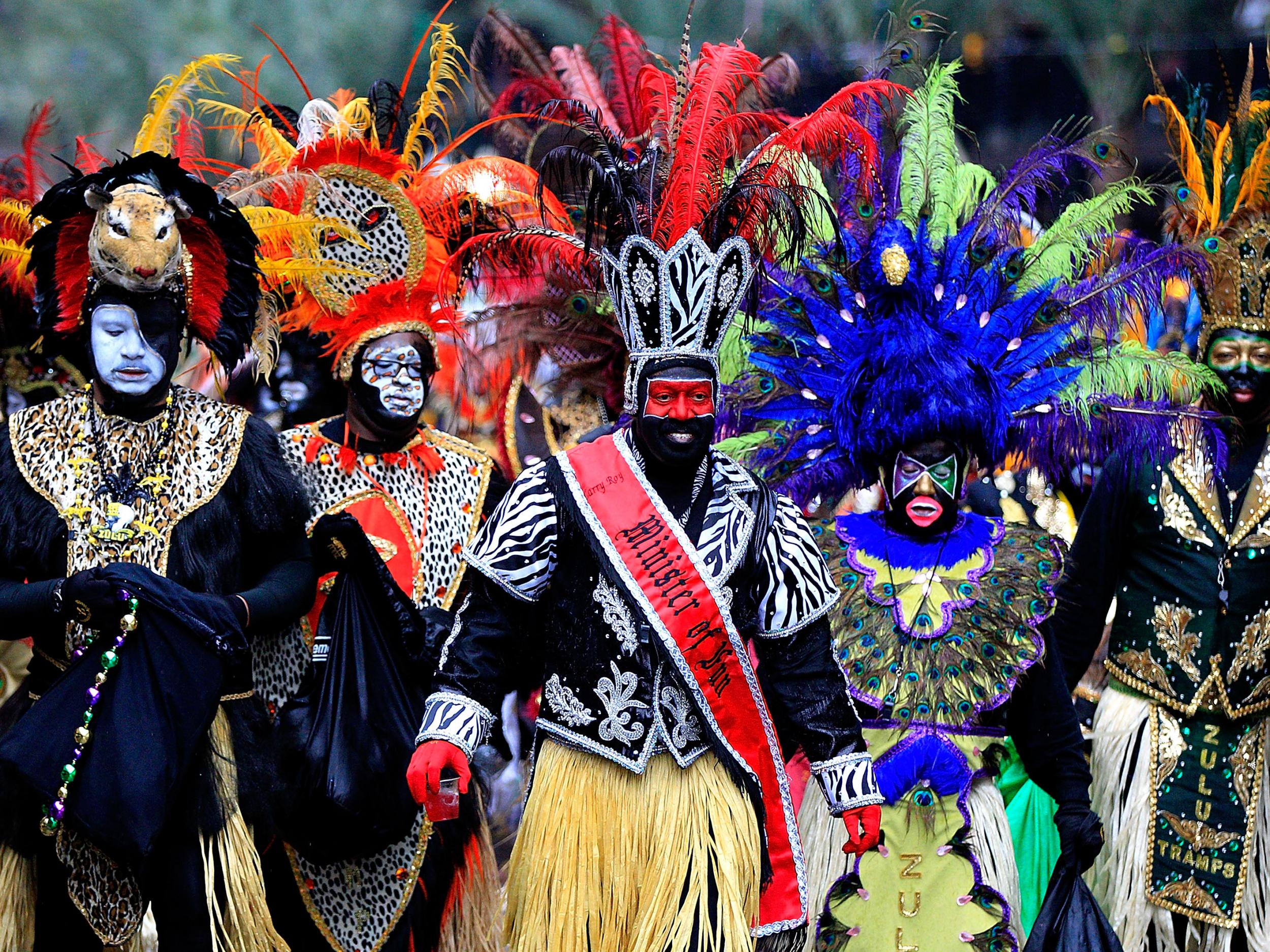New Orleans Mardi Gras: The history behind the famous parades
New Orleans is famous for its Mardi Gras parades, but there’s a serious point to them

It’s 6 January – Epiphany – and I’m standing in the French Quarter, beside the gilded statue of Joan of Arc on Decatur Street, the smell of beignets and chicory coffee from the nearby Café du Monde curling about my nostrils. The Maid of Orléans is 606 years old today, and here in New Orleans, for the 10th consecutive year, the Krewe de Jeanne d’Arc is paying homage to her.
Four hundred or so people are trooping past in medieval garb, on foot and horseback, some singing madrigals or playing pipes, others tossing handmade mementoes – cork horses, sword pendants and shield-shaped doubloons – into the crowd. All the main players from the Hundred Years’ War are here, and there are 10 Joans of different vintages, as well as a priory of monks and a band of angels.
Mardi Gras will soon be upon New Orleans. In the coming days, guests will outnumber locals four to one, but they’re undaunted. Not only have they been throwing this party – “the greatest free show on Earth” – for more than 160 years, they’ve been up to their ears in festivities for more than a month already. Mardi Gras Day – “Fat Tuesday”, 13 February this year – is but the grand finale of a carnival season that’s been going since Twelfth Night. No sooner had Christmas fed its trees into the chipper than the first parades took to the streets and beads rained down like hail.

This is the New Orleans way. This is a dark-days party town, with no let-up from Halloween till Lent. The porches of shotgun cottages stay decorated for six months – the purple, green and gold of Mardi Gras seamlessly replacing the nativity scenes that supplanted the giant pumpkins that superseded the killer clowns.
Though it’s not a religious holiday, the date of Mardi Gras is tied to Easter, the original moveable feast. It’s the last day of unabashed indulgence – or, rather, of bacchanalian excess – before Ash Wednesday, when Lent begins. Like a lot of Christian calendar traditions, it has its roots in a pagan festival: the Lupercalia, a three-day Roman fertility rite that takes place in February. Not that anyone who’s been here during Mardi Gras needs to be told that.
Mardi Gras was brought to what is now Louisiana at the turn of the 17th century by a couple of explorers, the French-Canadian Le Moyne brothers, Sirs Iberville and Bienville. The latter went on to found New Orleans in 1718 – and for as long as the French controlled the city, the day was celebrated freely. Much of what we associate with the event today – social clubs (known as “krewes”) holding coronations, masked balls and processions, as well as debauchery – was established then.
Nonprofit organisations that serve their communities all year round, krewes fund their often astronomically costly parades themselves. Defrayed by fundraising revenues, membership dues, ball admission charges and raffling off rides on floats, the bills for the extravaganzas laid on by the “super-krewes” – such as Endymion, Bacchus and Orpheus – can run into millions.
At the Krewe of The Rex Den, there’s no disguising where that money goes. Their HQ is a hangar-sized warehouse that strains to contain the 27 palatially dimensioned floats that will feature in this year’s parade. Instituted in 1872, Rex – whose regent is crowned the King of Carnival – is one of the oldest participating groups, and gave us many of the things that define New Orleans’s Mardi Gras today, including its official anthem, flag and colours. It is dedicated to more than pomp and circumstance, however.

Last year’s “king”, Dr Stephen Hales, explains: “Rex’s motto is ‘Pro Bono Publico’: for the public good. We set up a foundation with that name after Hurricane Katrina to help rebuild the city, and our aim now is to ensure that every child in New Orleans – whatever their background or ability – has access to an excellent education. In the past 12 months we’ve made grants to schools and supporting organisations of more than $5.5m [£4m].”
Founded in 1856 by six white protestants from Mobile, Alabama, the Mistick Krewe of Comus used to be the oldest parading group, but it withdrew from the schedule in 1992 after refusing to sign an ordinance that required it to certify publicly that it didn’t discriminate on the basis of race, religion, gender, disability or sexual orientation. It still hosts a ball on Mardi Gras night, however, to which the King of Carnival and his queen are invited, and continues to keep its membership masonically secret.
And then there’s the Zulu Social Aid and Pleasure Club, a predominantly African-American krewe formed in 1909 in an attempt to grab for its members a piece of Mardi Gras in which they had only ever been offered bit parts, as lowly flambeau carriers, marching with kerosene torches to illuminate the amusement of others. Film director Spike Lee has been asked to ride with them as celebrity Grand Marshal this year.
The Zulus are scheduled to hit the road first on Fat Tuesday, at 8am, but they are often late – perhaps still reeling from the free party they put on the day before in Woldenberg Park. Should people live in the 6th Ward or Tremé neighbourhoods and need a wake-up call, the North Side Skull and Bone Gang, a group of maskers who dress as skeletons, wake at dawn to knock on doors and bluesily chant: “We come to remind you before you die. You better get your life together. Next time you see us, it’s too late to cry.”

The parades may be raucous, but – as with the Joan of Arc one in January – the air is soft, the mood generous and the effect of it all wonderfully, deeply mysterious. I remember what Amy Kirk Duvoisin, captain and founder of the Krewe de Jeanne d’Arc, said about her Twelfth Night event. “Joan has been an obsession of mine since I was a teenager,” she told me. “She saved France. Without her, New Orleans might never have happened. What a debt we owe this teenager. Without her single-mindedness of purpose and courage we wouldn’t be here.”
And without the krewes, I thought, we wouldn’t be here either.
Join our commenting forum
Join thought-provoking conversations, follow other Independent readers and see their replies
Comments